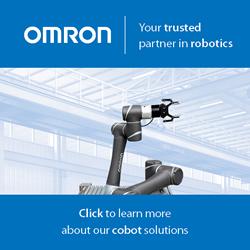Pleora Simplifies Machine Vision Application Development and Connectivity with Expanded eBUS SDK™
New Python and expanded operating system support with enhanced transmit capabilities in eBUS SDK simplifies design of production-ready machine vision applications and multi-vendor system integration
Ottawa, Canada - April 19, 2023: Pleora Technologies today expanded its industry-leading eBUS SDK™ to streamline application development and vision system connectivity for device manufacturers and integrators. Available now, lead customers have deployed eBUS SDK 6.3 in industrial automation, medical imaging, and security & defense applications.
"For over two decades eBUS SDK has been the industry-leading choice for end-to-end data connectivity in thousands of mission-critical machine vision applications," said Jonathan Hou, President, Pleora Technologies. "With its expanding feature set and wider operating system support, our platform solves key integration challenges in multi-vendor systems while delivering application development advantages to help device and system manufacturers reduce costs and complexity."
eBUS SDK is a feature-rich platform that simplifies application development along with receive and transmit capabilities to streamline end-to-end data delivery between sensor devices and host applications. With eBUS SDK 6.3, the platform integrates Python support for Windows, Ubuntu, CentOS, and NVIDIA Jetson ARM operating systems and edge devices. Designers can leverage integrated Python code support to simplify development, reduce costs, and speed time-to-market of production-ready software applications.
The new platform introduces expanded and updated operating system support for Windows 11, Ubuntu 22.04 LTS, and CentOS/RedHat 8. Expanding Pleora's Preferred Partner relationship with NVIDIA® to include machine vision connectivity solutions, new JetPack 5.1 support means eBUS applications can be deployed on the latest NVIDIA Jetson™ AGX Orin and Jetson Orin NX platforms. For embedded applications, runtime packages for Linux operating systems (x86/ARM) enable lightweight deployment of eBUS-based applications for devices with limited onboard storage and memory.
The vision standard-based platform lets developers control, configure, and acquire images from any machine vision imaging device while avoiding supporting multiple APIs from different vendors. Compared to camera vendor provided SDKs, eBUS frees developers from being tied to a specific camera, and instead they can choose the device that is best for the application. The eBUS Universal Pro driver reduces CPU usage, leaving more processing power for analysis and inspection applications while helping to meet latency and throughput requirements for mission-critical applications.
Unique eBUS Edge transmit functionality, available as an add-on license feature with eBUS SDK, provides a software-only approach to convert cameras, sensors, and embedded platforms into fully compliant GigE Vision and GenICam devices. In 3D applications, for example, the software converts sensor data into a GigE Vision video stream that is received and analyzed by off-the-shelf image processing. Typically, 3D data has been transmitted over legacy or proprietary interfaces, which poses integration complexities and costs for end-users employing machine vision processing. eBUS Edge has also been deployed in medical imaging applications to transmit X-ray and patient data between flat panel detectors (FPDs), processing, workstations, and storage servers.
Download eBUS SDK 6.3
eBUS SDK 6.3 in now available. For full product details, including data sheet, technical resources, and download or upgrade access visit https://www.pleora.com/machine-vision-automation/ebus-sdk/.
About Pleora Technologies
Global manufacturers rely on Pleora's expertise in real-time sensor connectivity, AI, and rugged networking to shorten time-to-market, reduce risk, and lower costs. Established in 2000, the company serves over 1500 active customers in the industrial automation, medical imaging, and security and defense markets. Learn more at pleora.com.
Featured Product

Discover how human-robot collaboration can take flexibility to new heights!
Humans and robots can now share tasks - and this new partnership is on the verge of revolutionizing the production line. Today's drivers like data-driven services, decreasing product lifetimes and the need for product differentiation are putting flexibility paramount, and no technology is better suited to meet these needs than the Omron TM Series Collaborative Robot. With force feedback, collision detection technology and an intuitive, hand-guided teaching mechanism, the TM Series cobot is designed to work in immediate proximity to a human worker and is easier than ever to train on new tasks.
